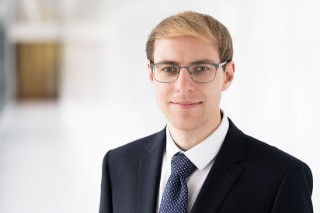Ferroelectric Memory Devices: Pioneering In-Memory and Neuromorphic Computing
The advent of novel large neural networks such as large language models e.g. ChatGPT increases the computing demand dramatically. Conventional hardware limited by the von-Neumann bottleneck is not able to follow suit. Novel pathways to meet the ever-increasing system requirements are highly needed. In this talk we will discuss the advantages of digital accelerators employing computing-in-memory macros, which benefit from the extreme parallelization inside memory arrays for the acceleration of costly multiply-accumulate operations. We will discuss various non-volatile, particularly ferroelectric memory concepts to demonstrate this concept and show first realizations of ferroelectric field effect transistor (FeFET) based memory crossbars for the acceleration of algorithms ranging from convolutional neural networks over decision trees to few-shot learning.
Date and Time
Location
Hosts
Registration
-
 Add Event to Calendar
Add Event to Calendar
- Contact Event Hosts
-
Nazek El-Atab, Assistant Professor of ECE, King Abdullah University of Science and Technology, Saudi Arabia
Webinar series organized by the IEEE EDS Electronic Materials Committee on "From Electronic Materials to Systems: Unlocking the Potential of Emerging Memory Technologies"
Speakers
Thomas Kampfe of TU Braunschweig, Germany
Ferroelectric Memory Devices: Pioneering In-Memory and Neuromorphic Computing
The advent of novel large neural networks such as large language models e.g. ChatGPT increases the computing demand dramatically. Conventional hardware limited by the von-Neumann bottleneck is not able to follow suit. Novel pathways to meet the ever-increasing system requirements are highly needed. In this talk we will discuss the advantages of digital accelerators employing computing-in-memory macros, which benefit from the extreme parallelization inside memory arrays for the acceleration of costly multiply-accumulate operations. We will discuss various non-volatile, particularly ferroelectric memory concepts to demonstrate this concept and show first realizations of ferroelectric field effect transistor (FeFET) based memory crossbars for the acceleration of algorithms ranging from convolutional neural networks over decision trees to few-shot learning.
Biography:
Thomas Kämpfe is professor for Neuromorphic Computing at TU Braunschweig, Germany and group manager for Neuromorphic Systems and department manager Components & Systems at the Center Nanoelectronic Technologies at Fraunhofer IPMS. He earned his habilitation in electrical engineering in 2022 and his Ph.D. in Physics in 2016, both from TU Dresden. Following research scholar positions at the University of Colorado at Boulder and Stanford University, he joined the Fraunhofer Society in 2017. Dr. Kämpfe has authored over 200 peer-reviewed articles in prestigious journals and conferences such as Nature Communications, ACS Nano, Advanced Functional Materials, IEDM, VLSI, ESSCIRC, and DATE. His research focuses on brain-inspired computing, approximation computing, and computing-in-memory. In recognition of his contributions, he was awarded the George-E-Smith Award in 2023, the Dresden Excellence Award in 2023, the Excellent Paper Award at RFIT 2022, and received a Best Paper Nomination in DATE 2021 and 2023. Dr. Kämpfe has actively contributed to various international conferences, serving on the organization committees or as a paper reviewer for events like IEDM, DAC, DRC, EDTM, ICCAD, DATE in the field of emerging devices and neuromorphic computing.
Address:Saudi Arabia

